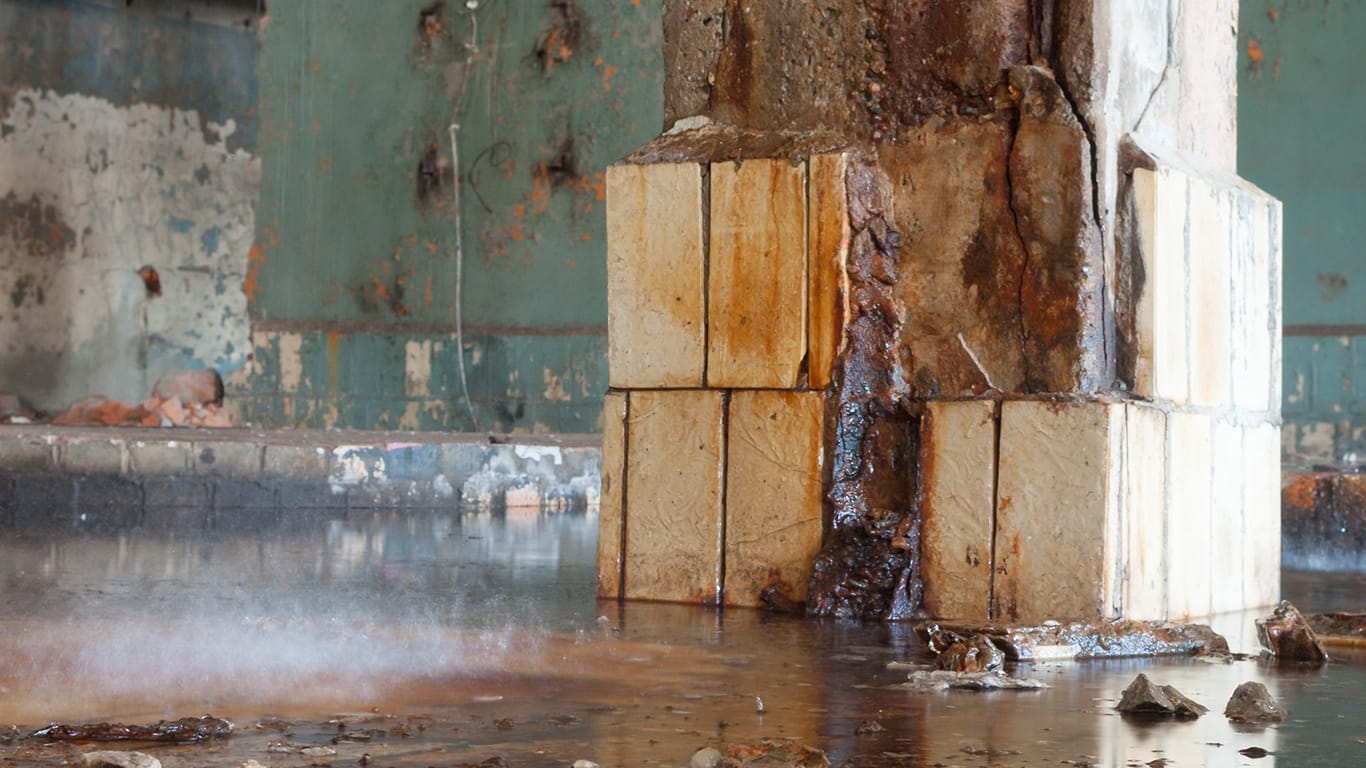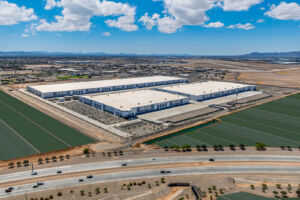Water damage presents a constant threat to commercial real estate. The potential for major financial and structural devastation is real if unchecked.
Property owners can effectively minimize risks through proactive mitigation strategies focused on maintenance, vulnerability assessments, technology integration, controlled drainage, emergency readiness, and adequate insurance. Implementing this multi-layered defense allows buildings to withstand gradual and sudden moisture issues.
Staying updated on weaknesses, climate threats, and the latest flood technologies is vital as well. With dedication to these endeavors, the longevity and value of commercial investments will persist.
Defining Water Damage
Water damage refers to a variety of situations caused by floods, broken pipes, or storms. Water intrusion can occur slowly over time. It can start with a small leak that gradually damages walls and foundations. Or it can happen suddenly with a flood that causes immediate destruction.
Common sources include weather events like heavy rains or flooding, plumbing failures, sewer backups, roof leaks, broken windows, or naturally high groundwater levels. Unfortunately the list continues of how water can make its way into a commercial property and lead to considerable damage.
Water Damage Consequences
Water damage reaches beyond physical deterioration to also impact health and finances. Prolonged moisture fosters hazardous mold, compromising respiratory health and causing allergic reactions. It also progressively undermines structural integrity over time, weakening critical supports.
Additionally, intensive restoration demands huge costs, running to millions depending on damage extent. Combined with lost rental income from vacancies during repairs, leaks can sink properties. Though silent at first, prolonging water remediation allows exponential devastation across biological, structural and financial dimensions—crippling building function. Getting ahead on mitigation curtails downstream impacts.
Assessing Property Vulnerability
To appropriately guard your property against water damage, a thorough and periodic risk assessment is indispensable. Start with identifying potential internal and external sources such as proximity to a flood-prone area, condition of plumbing and sewage systems, or integrity of structural elements like roof or windows.
Identifying these risk factors plays a key role in preventing major water-related incidents. Furthermore, conduct regular maintenance checks for these identified vulnerabilities to ensure they don’t transform into serious issues. Inspections will not only keep your property safe but also help catch minor issues before they become major water-related disasters.
Sydney Water Damage Specialist’s Approach
Specialists in watershed management understand the severity of these situations and have designed their strategies to address each potential problem. The service here, https://www.waterdamagespecialist.com.au/sydney/, starts with inspecting the building completely – inside out, then identifies risk areas and associated drainage or plumbing solutions required for each.
Their next focus is installing necessary preventive measures such as high-end technology for leak detection, sump pumps or backwater valves. Crucially, they ensure every minor repair needed is dealt promptly to avoid repetitive damages due to negligence. Lastly, but importantly, these specialists will also guide you on crafting a robust emergency response plan.
Routine Inspections Importance
Preventive approach is the crux of effective water damage mitigation in commercial spaces. Routine inspections act as an indispensable tool to spot early signs of faults or wear that may lead to severe water damage over time. Targeted inspections should cover all critical areas such as gutters, downspouts, basement walls, roofs, windows and sewage systems.
Besides functioning equipment – rotted wood frames, damp drywalls or ceilings patches – bent doors or window frames are some tell-tale signs of possible water intrusion. A good rule of thumb is conducting these inspections after major weather events, plumbing alterations, or at least twice in a year.
Maintaining Plumbing Systems
The plumbing system in your commercial building is a potential spot for water leaks and therefore warrants special attention. Remember, even a small faucet drip can lead to gallons of wasted water over time, and often unnoticed leaks may lead to mold growth and structural damage.
Regular maintenance checks on plumbing systems, including pipes, connectors, faucets and fixtures, are paramount. All detected issues must be immediately rectified to minimize the cumulative moisture burden on your commercial property.
Integrating Drainage Solutions
Another important step in mitigating water damage is ensuring your property has an effective drainage solution. Poor or insufficient drainage systems can lead to water accumulation in unwanted areas, causing harm to the structure’s foundation, walls and landscape.
Including suitable drainage solutions like gutter guards, French drains, catch basins and dry wells can significantly prevent water-logged scenarios like these on your property. Adequate slope management ensuring rainwater runoff away from the building can further bolster the efficacy of your drainage system.
Risk of Natural Disasters
You must consider the likelihood and severity of natural disasters your commercial property could face such as floods or hurricanes. These events often cause extensive water intrusion, resulting in significant damages to both external and internal parts of the building.
Understanding these hazards can aid you to enhance preparedness measures. For instance, reinforcing structures with flood-proof materials or including a flood barrier system might be beneficial for properties in flood-prone zones.
Roof and Window Vulnerabilities
Your commercial building’s external elements – specifically the roof and windows – are primary entry points for water intrusion during severe weather conditions. Poorly maintained roofs can lead to leaks, resulting in potential interior water damage. Similarly, improperly sealed or ancient windows offer an avenue for water penetration.
Routine inspection and maintenance keep these areas primed against such intrusions. Use quality sealants around window frames and keep checking roofing material’s state regularly.
Leveraging Technology for Detection
The use of technology plays a crucial role in identifying early indicators of potential water intrusion. Devices like moisture meters can detect unwarranted levels of humidity within walls indicating a possible leak. Sophisticated leak detectors connected with your smartphone notify immediately when they sense even a drop of water.
Investing in these gadgets can help you stay steps ahead of possible water damage, giving you enough time to act and prevent significant loss.
Sump Pumps and Backwater Valves Utilization
For commercial properties with basement areas, the incorporation of sump pumps can be a lifesaver. They help pump out excess water that seeped into the basement due to flooding or high groundwater levels hence keep it dry and undamaged.
Backwater valves is another special plumbing device that prevents sewerage water from flowing back into the building during heavy rains. Ensuring proper installation of these devices is crucial to fully utilize their benefits.
Emergency Response Planning
Your property should have a well-crafted emergency response plan in case of a significant water intrusion event. This involves immediate actions to be taken, key emergency contact details and outlining evacuation measures if needed for human safety.
This preparedness will reduce panic during such situations and ensure faster recovery with lesser damage, thereby reducing loss of property value or rental income.
Insurance Coverage Considerations
A guide to filing an insurance claim is key after a water damage incident. Carefully review policy terms and key details beforehand. When filing, outline critical information including incident date, damage estimates, repair costs and documentation showing destruction in photos, videos and notes on structural weaknesses.
Thorough documentation and descriptions of all impacted areas streamline communication with inspectors and settlement. Building rapport with your provider also eases the process. Those in flood zones should consider additional coverage as well. While tedious, proper filing speeds recovery.
Closing Thoughts
Dedicated mitigation strategies curb water damage risks in commercial spaces. Preventative maintenance, drainage solutions, disaster preparedness, modern water detection instruments, and comprehensive insurance comprise a robust defense. Remaining vigilant and responsive preserves asset value and longevity.




